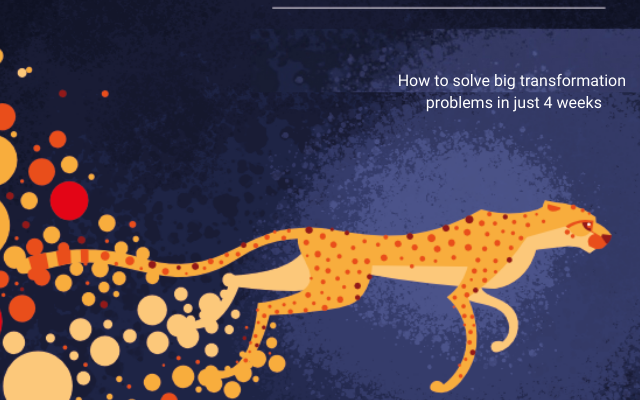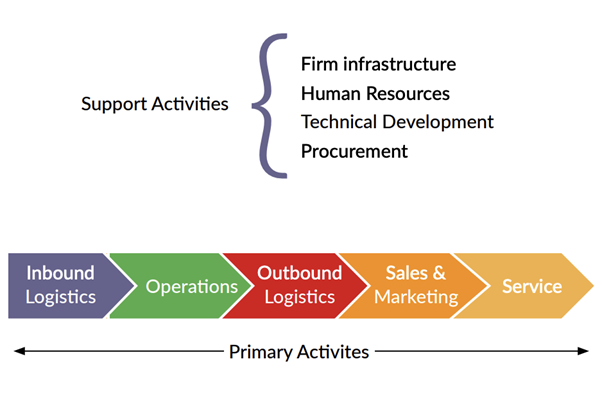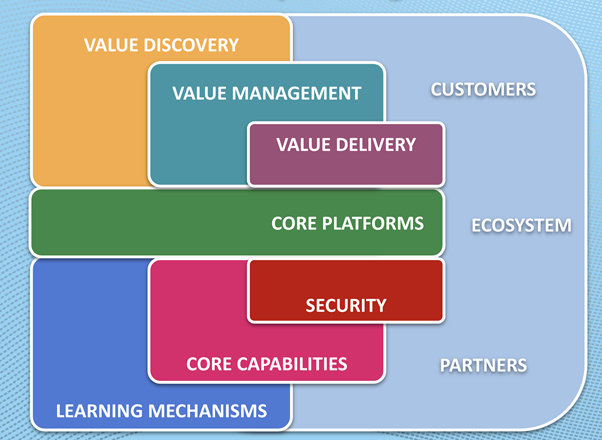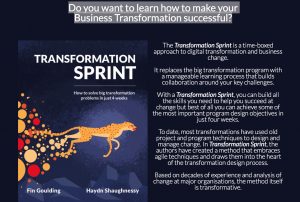Transformations are notoriously difficult to manage successfully, with a well-known failure rate exceeding 75%. The COVID pandemic has heightened the need for rapid change, not only in the digitisation of processes but also in some of the fundamental aspects of how companies and society operate.
Post-COVID, we can expect high unemployment rates as a result of significant changes in travel habits, work locations, supply chain disruption, energy consumption, accelerated change in financial services and so on.
We know that the backdrop to this will be national insolvency pressures, particularly in the Eurozone (where COVID has had the worst economic impact) stressed exchequers, raised taxes and some attempt to reduce wealth disparity.
The breadth of change needed is currently under appreciated and has been treated as an option, the question being whether or not we want to return to the old normal. The chances are we will have to come to terms with significant and wide-ranging change. To navigate this we need methods that make change more manageable but sadly change or transformation has a habit of leading to failure.
Although there are many analyses of what goes wrong in transformations, none of these addresses the fact that most organisations start from a dysfunctional state that will have engendered multiple conflicts and inefficiencies. So regardless of your aspirations, the chances are high that existing dysfunctionality will make transformation almost impossible.
A method that can explore these dysfunctions and yet render the transformation process as a simple, manageable learning process would be a big step forward in how change is managed.
We argue that the combination of Transformation Sprints and the concept of a generative operating model delivers the necessary method and context for successful change.
The generative operating model
Operating models are the combination of infrastructure, services, rules, governance and work practices that enable an organisation to fulfil its role.
A typical operating model would be the one familiar to anybody who has done an MBA, Michael Porter’s five forces
Since the 1980s operating models have become ever more diverse as companies have added in global supply chain management, ERP, outsourcing and offshoring, open innovation, AI/ML, platforms and ecosystems and lately remote work.
In our experience from helping companies define a route to change, we have observed that the operating model is a concept and construct that remains intellectual out of reach for most executives. They have their functional day job so pondering the future state of the firm is a luxury they don’t afford themselves. Instead, they reach for the next innovation in their specialised field or for the next fad.
Another observation from our work is that operating models when they are discussed, tend to be complex, fixed systems of governance. If organisations were to think of their operating model in a more flexible way, a transformation could become easier.
The diagram below shows some elements of a generative operating model. By generative, we mean that the OM enables people to think about what to change, how to change and when. It is a license to create the journey rather than a fixed destination.
The Flow operating model
There are activities that we have seen need attention, though a different body of experience might yield a different set of activities. For now, we are simply arguing that the TO-BE or future state of a company, its target operating model, should be generative.
The transformation sprint
Creating a transformation in a sprint format could be thought of as difficult. After all, transformations by their nature are comprehensive. Nonetheless, we prefer the sprint approach and we think of it as a valuable stretch goal. The sprint approach is well established in other fields, which makes the method accessible.
Sprints allow us to scale back big projects. That is the primary goal. And in the transformation sprint, we scale the large transformation program back to one project (the Lighthouse). What we also do is use the sprint to discover an organisation’s unique context. Whereas consultancies like to use a model (Spotify, SAFe), in reality, and especially post-COVID, it is essential to discover or uncover the context an organisation finds itself in; its uniqueness and particular modus-operandi.
The goal of a transformation sprint is to lay the conditions for the Lighthouse Project. This project has four important characteristics:
- It addresses a structural problem.
- It delivers value quickly.
- It is a learning mechanism for the team and ultimately the organisation.
- It is scaled down to ensure success and learning that can then be scaled up into a generative operating model.
We time-box the Transformation Sprint to four weeks. To succeed in that time scale means being very well prepared, so all meetings and feedback channels are ready and there is no administration to get in the way of sprint activities.
The sprint can also pick off any activity area in the operating model (see diagram) and take a sprint approach to each, in a prioritised way.
Given those prerequisites, here’s how to plan a Transformation Sprint. We already mentioned the four-week time-box. Within that there are six phases which do overlap to remain within the time-box:
- Phase 1: Perspective gathering from DAY 1 onwards. We use about ten days on interviews, though patterns emerge early on, which you can record in a draft Issues Document.
- Phase 2: Concurrent with Phase 1, we access and begin analysing a range of business strategy and technical documents. We will show you later a set of templates for doing this and more are available on our website.
- Phase 3: The Issues Document. We build a list of significant issues from the interviews and the documentation. The list will start long but eventually, reduce down to 10.
- Phase 4: Describing the company’s AS-IS state and a draft of any emerging target operating model(s). This usually involves describing dysfunctionality in the firm, often caused by incomplete transformations and the coexistence of two or more operating models. Two or more operating models may be competing with each other.
- Phase 5: A day-long or at least half day playback with senior leaders where they prioritise issues, make real decisions and agree, from a list of potential Lighthouse Projects, which one to embark on.
- Phase 6: The outline design of a Lighthouse Project that will address dysfunctionality and set the transformation up for success as well as bring you critical experience in thinking in new ways about target operating model design.
Conclusion
The transformation to an agile, digital business is notoriously difficult. There is no agreed method and many of the analyses of what goes wrong fail to tap into the conflict and dysfunction that characterises many firms and worsens during change. Scaling down from the temptation to run big transformation programs to get from an AS-IS state to a hard-to-know TO-BE future target state gives companies vital opportunities to simplify the change, explore their context and learn the skills needed to prioritise and build a new generative Operating Model.
To learn more and secure a copy of the book please visit www.thetransformationsprint.com where you can register for training on Transformation Sprints too.
Article by channel:
Everything you need to know about Digital Transformation
The best articles, news and events direct to your inbox
Read more articles tagged: Featured, Operating Model










